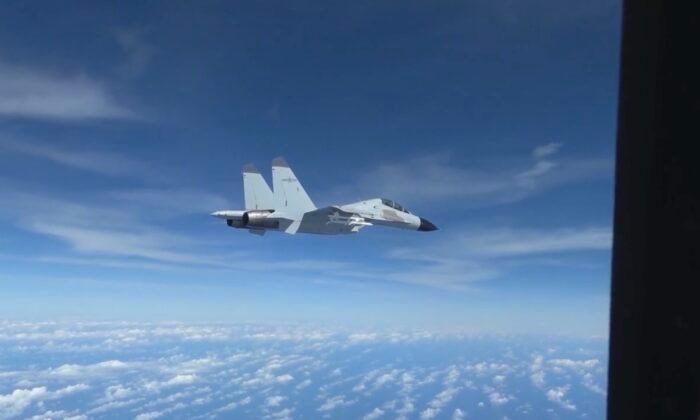A Chinese fighter jet aggressively intercepted a U.S. aircraft earlier in the month, risking the lives of its crew and escalating tensions between the two nations.
Indo-Pacific Command released a video of the incident, in which the Chinese fighter pilot aggressively cuts across the nose of the U.S. aircraft, forcing it to fly through the smaller plane’s turbulence.
The move is part of a long-running pattern of Chinese military aggression in the international airspace of the South China Sea, through which the regime has attempted to force the militaries of several nations to cease monitoring the region.
“The RC-135 was conducting safe and routine operations over the South China Sea in international airspace, in accordance with international law,” the Indo-Pacific Command statement said.
‘Tempting a Crisis’
China’s communist regime and its military wing, the People’s Liberation Army (PLA), have a long history of aggressive intercepts against nations operating in the region.“If Beijing’s intent is to somehow intimidate the United States out of operating according to international law, that hasn’t worked [and] it’s not going to work. But it is very reckless behavior.”
In some incidents, PLA aircraft have succeeded in forcing U.S. and allied aircraft out of international airspace by releasing chaff, a countermeasure made of numerous shards of metal, into their engines mid-flight.
In that instance, the Canadian aircraft had been on an international mission to investigate whether Chinese ships were illegally breaking sanctions by delivering oil to North Korean vessels at sea.
“It is a pattern of behavior that has been growing in particular over the last year and a half or so,” Ratner said.
“On the whole, the PLA is not yet willing or serious about trying to manage this competition in a way that we would expect a responsible or aspiring major power to do so. We think that’s a huge problem.”





